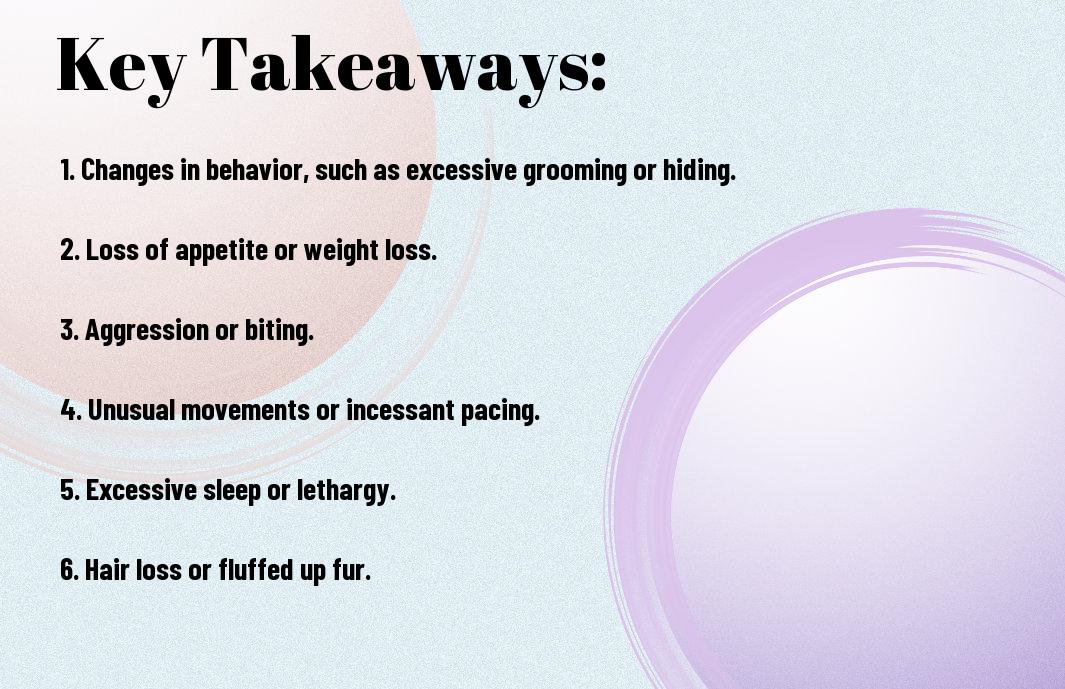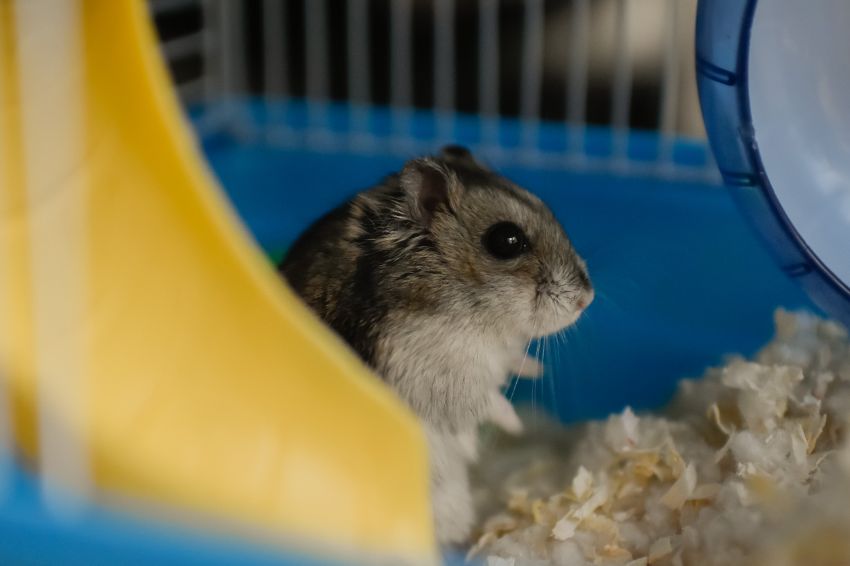Have you ever wondered if your furry friend is feeling stressed or anxious? It’s important to be able to recognize the signs of stress and anxiety in your hamster in order to provide them with the proper care and support. In this blog post, we will explore the common indicators of hamster stress and anxiety, as well as offer tips and advice on how to help your pet feel more at ease. By understanding your hamster’s behavior and body language, you can ensure that they live a happy and healthy life.
Key Takeaways:
- Behavioral changes: Keep an eye out for excessive grooming, agitated behaviors, and hiding in their habitat. These can be signs of stress or anxiety in hamsters.
- Physical symptoms: Look for hunched posture, rapid breathing, and loss of appetite. These can indicate that your hamster is experiencing stress or anxiety.
- Environmental factors: Ensure that your hamster’s habitat is quiet, secure, and enriched with toys and activities to minimize stress. Pay attention to any recent changes in their surroundings that may be causing them distress.

Signs of Stress and Anxiety in Hamsters
Some signs that your hamster may be stressed or anxious can be subtle, but it’s important to be able to recognize them in order to address the issue and ensure your pet’s well-being. Here are some common signs to look out for.
Changes in Eating Habits
If you notice that your hamster is eating significantly less than usual, or has stopped eating altogether, this could be a sign of stress or anxiety. Conversely, overeating can also indicate a problem. Pay attention to your hamster’s food intake and note any drastic changes.
Unusual Hamster Activity Patterns
Another sign of stress or anxiety in hamsters is excessive hiding or staying in one corner of the cage for extended periods of time. In contrast, some hamsters may display increased activity such as excessive running or climbing in an attempt to cope with stress. Both of these patterns are worth noting as potential signs of distress.
Factors Contributing to Hamster Stress
Your hamster’s stress can be caused by a variety of factors. Understanding these factors is crucial in identifying and addressing the root cause of your hamster’s anxiety. There are several contributing factors that can lead to stress and anxiety in your small pet, such as environmental stressors and social and psychological factors.
Environmental Stressors
Environmental stressors are factors in your hamster’s immediate surroundings that may contribute to feelings of stress and anxiety. These can include:
- Overcrowded living space
- Lack of hiding spots
- Exposure to loud noises
These factors can cause stress for your hamster and lead to behavior changes. Paying attention to your hamster’s environment and ensuring that it is conducive to their natural habits can help alleviate some of these stressors.
Social and Psychological Stress Factors
In addition to environmental stressors, social and psychological factors can also play a significant role in your hamster’s stress levels. These can include:
- Isolation from other hamsters
- Exposure to constant light
- Repetitive, lack of mental stimulation
Perceiving social and psychological stress factors is essential in preventing and addressing stress and anxiety in your hamster. Providing appropriate mental stimulation and social interaction for your pet can help alleviate these factors.
Mitigating Stress and Anxiety in Your Hamster
After identifying signs of stress or anxiety in your hamster, it’s important to take steps to help alleviate these feelings and create a more comfortable environment for your pet. By implementing strategies to minimize stress, you can help your hamster lead a happier and healthier life.
Creating a Comfortable Habitat
One of the first steps in mitigating stress and anxiety in your hamster is to ensure that their habitat is comfortable and suitable for their needs. This includes providing a spacious cage with plenty of bedding, hiding spots, and a running wheel for exercise. Additionally, keeping the cage clean is essential for your hamster’s well-being, as a dirty environment can contribute to stress. Make sure to provide a consistent supply of fresh food and water, and consider incorporating hammocks, tunnels, or chew toys to enrich their living space.
Interaction and Handling Best Practices
When it comes to interacting with your hamster, it’s important to handle them gently and carefully to avoid causing unnecessary stress. Avoid sudden movements or loud noises that can startle your hamster, and always approach them calmly and with slow movements. Allow your hamster to become comfortable with your presence before attempting to handle them, and be mindful of their body language to ensure they are not feeling overwhelmed. Limit handling to short, positive interactions to minimize stress and create a trusting bond with your pet.
Monitoring and Maintaining Hamster Well-being
However, it is not enough to simply be aware of the signs of stress and anxiety in your hamster. As a responsible pet owner, it is your duty to actively monitor and maintain your hamster’s well-being to ensure they are happy and healthy.
Regular Health Assessments
Regular health assessments are crucial in detecting any potential health issues early on. This includes monitoring their behavior, eating habits, and physical appearance. By paying attention to any changes in these areas, you can identify potential health problems and address them before they escalate. Additionally, keeping their living environment clean and providing a well-balanced diet will contribute to their overall well-being.
When to Consult a Veterinarian
Despite your best efforts, there may come a time when your hamster’s well-being is beyond your control. If you notice any abnormal behaviors or symptoms, such as sudden weight loss, lethargy, or difficulty breathing, it is crucial to consult a veterinarian immediately. Regular veterinary check-ups should also be incorporated into your pet care routine to detect any underlying health issues that may not be immediately apparent to you.
Conclusion
Considering all points, it is important to closely observe your hamster for signs of stress or anxiety. This includes anticipating any changes in behavior, such as excessive grooming, aggression, or unusual hiding. In addition, monitoring their environment and ensuring it is conducive to their well-being can help alleviate any potential stressors. By being attentive to your hamster’s needs and providing a supportive environment, you can help ensure they remain healthy and content.
FAQ: How to Tell if Your Hamster is Stressed or Anxious
Q: What are some signs that my hamster is stressed or anxious?
A: Some common signs that your hamster may be stressed or anxious include excessive grooming, changes in eating or sleeping patterns, reduced activity, aggression, or hiding in its house. It may also exhibit repetitive behaviors such as pacing or over-grooming.
Q: How can I help reduce my hamster’s stress or anxiety?
A: It’s important to ensure that your hamster’s living environment is suitable and that its cage is appropriately sized, cleaned regularly, and has the necessary toys and enrichment. Providing a quiet and calm environment, as well as a consistent routine, can also help reduce stress. Handling your hamster gently and properly can also make a difference. Additionally, if you suspect that your hamster is stressed, it’s best to consult with a veterinarian for advice and guidance.
Q: Are there any medical issues that can cause stress or anxiety in hamsters?
A: Yes, medical issues such as dental problems, digestive issues, infections, or skin conditions can cause stress and anxiety in hamsters. It’s important to monitor your hamster’s health closely and seek veterinary attention if you notice any changes in behavior or physical symptoms. Additionally, providing a balanced diet and proper grooming can help prevent some of these health-related stressors.














